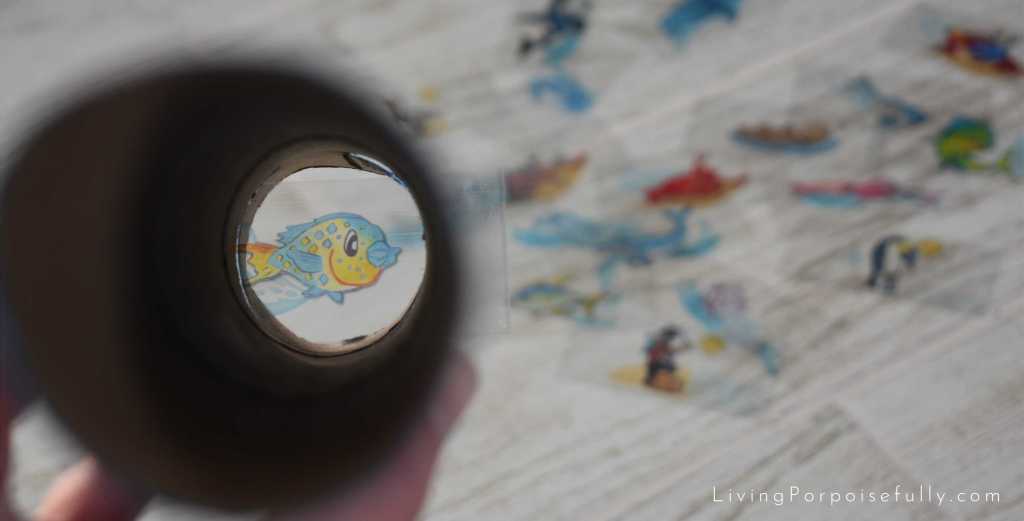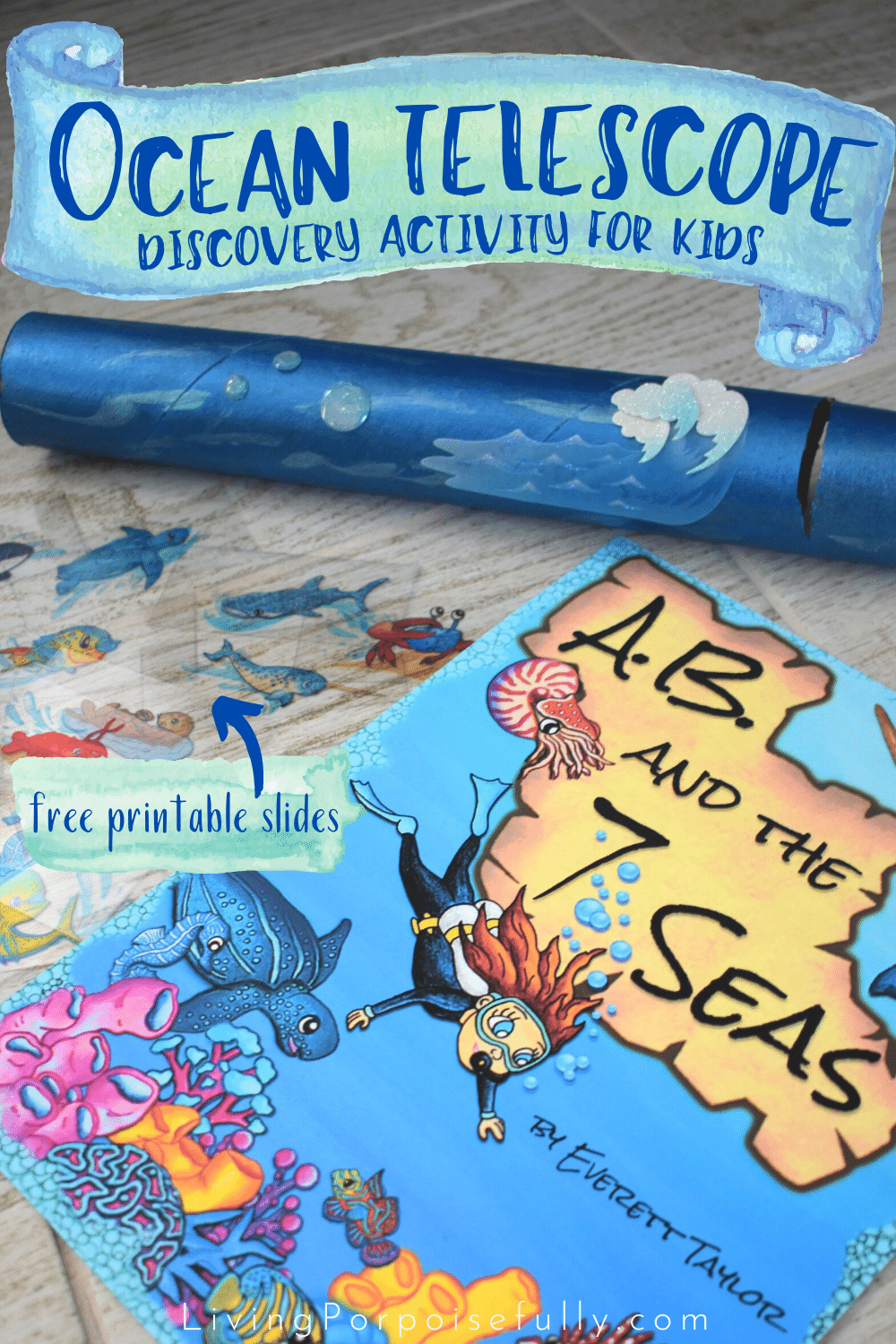We’re so very excited to announce the arrival of our new picture book on Amazon, A.B. and the 7 Seas!!! It’s been a labor of love, and we have so many goodies to share with you to celebrate!
The book is jam-packed with 77(!) ocean wonders, many of them animals. From the well-known to the bizarre, there are so many amazing creatures to discover.
With each discovery, there is a sprinkle of fun learning and a colorful & charismatic illustration that we lovingly hand-draw and hand-paint. (We’ll be taking you behind the scenes to our illustrating soon!)
“This delightful and stunningly illustrated read-along exploration story provides young children with an engaging and entertaining new “twist” on the traditional ABC alphabet learning book…As an added bonus, this book helps raise awareness of the tremendous diversity of life in our planet’s oceans and even provides an opportunity to teach children ocean geography!”
-Dr. Linda Cronin-Jones, emeritus professor at the University of Florida
Get your feet wet and watch the book trailer:
Recommended ages & grades: ages 3-8; grades Pre-K through 2nd. It goes beyond the ABC’s and we love using it as a “field guide” for older kids too!
To celebrate the arrival of our new book, we’ve created a go-along activity to help kids explore the amazing undersea world…it’s a DIY telescope for identifying sea animals using illustrations from the book!
The activity takes kids alongside the main character’s adventure, letting them have one of their own as they discover ocean animals. In the book, Alex Brave (aka A.B.) hops on her ship to sail around the world in search of ocean wonders for each letter of the alphabet.
A.B. uses her telescope to spot creatures from afar on her ship and scuba gear to breathe underwater to explore the undersea realm. Kid-friendly definition: A telescope is a tool that makes faraway objects look closer. (This would also be a great opportunity to let kids explore with a magnifying glass, lenses, and/or mirrors.)

In this activity, there are 20 ocean animals that kids will discover by using their “telescope” and then looking in the book to identify the animal and learn a little about it.

We’ve made this super easy with our free printable animal slides, and simple steps for the craft that upcycles a used paper towel roll and any craft items you might already have (great for teaching recycling, repurposing, and reusing). It makes for a splashing learning adventure as well as an art project and kids will love decorating their own telescope!
The activity can be used in the elementary or pre-school classroom (tip: laminate the slides for more durability and ease), home school, or just as a fun activity to do with the kids. It would be a great science lesson or activity for your science center or station!
By the way, for all you teachers and homeschool parents, this is a great STEM or STEAM activity that hits NGSS & Common Core Standards when used with the book. Hooray! (NGSS LS4 K-2, CC Informational Text; Key Ideas & Details K.1, 1.1, 2.1)
We hope you love A.B and the 7 Seas and this fun learning activity. Swim on over to Amazon by clicking here to check out our new book and dive into the adventure!
Buy on AmazonSupplies:

- used paper towel roll
- paint brush (if you use paint)
- xacto knife
- pencil
- scissors
- craft items to decorate with: paint, paper, stickers, etc. We used:
- blue paint (we used 2 shades of metallic blue)
- stickers
- surface to paint on (we used a brown paper bag)
- transparency film for inkjet printers OR white cardstock/paper (2 sheets)
- ocean animal downloadable slides – click here for download
- A.B. and the 7 Seas children’s book to use as an ID guide (buy on Amazon here)
Note: If you’ll be using these for a classroom activity or want to make them more durable/rigid, you may want to laminate the ocean animal slides.
Step 1
*An adult needs to do this step for safety!*
Make two slits towards the end of the paper towel roll so that it can hold a slide (the size of a 3″ x 3″ sticky note folded in half, or 3″ x 1.5″). We penciled in lines to get us started, used the Xacto knife to cut, and then trimmed the slits to be able to hold the slide:




Step 2
Paint the paper towel roll (you can stand it up to make it easier to go all the way around)

Let it sit to dry:

Step 3
While the telescope is drying, download the Ocean Animal Telescope Slides, print them on transparency sheets or cardstock/paper, and cut them out. (The transparency sheets will allow more light through, making it a bit more fun, but paper/cardstock works fine too! Feel free to poke some holes in the side of the cardboard tube for more light.)

TIP: If you’re using this activity in the classroom or want it to be more durable (and easier to insert the slides into the telescope), you may want to laminate the slides.
Step 4
Decorate the telescope! Use whatever paint, paper, stickers, or other craft items you might have on hand. We used aqua metallic paint and wave & bubble stickers:


Step 5
Use the slides to play ocean animal ID! Insert the slides (may need to hold them in place), look through the end furthest from the slide, and use our children’s book A.B. and the 7 Seas to identify the animals and learn about them.




We hope you have a blast exploring the ocean! You can find all of our books on Amazon here and for more free ocean activities, check out our homepage here.
Are you an ocean lover too? Sign up your email here to join the pod (free email list) and pass on the fun to your friends.
Happy adventures!

Disclaimer: All activities on this blog are intended to be performed with adult supervision. Appropriate and reasonable caution should be used when activities call for the use of materials that could potentially be harmful, such as scissors, or items that could present a choking risk (small items), or a drowning risk (water activities), and with introducing a new food/ingredient to a child (allergies). Observe caution and safety at all times. The author and blog disclaim liability for any damage, mishap, or injury that may occur from engaging in any of these activities on this blog.



0 Comments for “Ocean Telescope Discovery Activity”